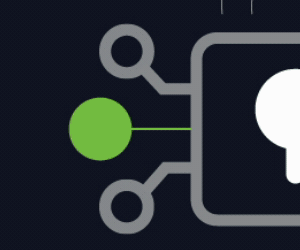Watch the full video here to learn more about securing K–12 Microsoft and Google systems.
One built-in element that school IT professionals should always take advantage of is data classification with sensitivity labels, says Jorge Quinones, a Microsoft consultant for education at CDW. For example, these labels could flag data as “urgent” or “student records.”
“You can also apply restrictions to a label, like encryption and access control, meaning that even if a user can see that file, they cannot access the data,” Quinones explains. “So, now you are protecting documents or sites through sensitivity labels.”
K–12 schools using Microsoft can also take advantage of Intune and Defender’s security solutions.
Intune allows IT administrators to configure compliance settings, which designate how a device must behave according to specified requirements: up to date, equipped with anti-virus and firewalls, joined to the school’s domain, etc. “Having devices that are compliant means that not any device can access your resources,” Quinones says.
EXPLORE: Windows 11 delivers built-in security for education and beyond.
Inside Microsoft Defender, IT admins can deploy a simulation attack, which runs phishing campaigns for the school’s users. “You can also create trainings, and the system will trigger when they click on the email and automatically enroll them in a training,” Quinones says.
Security Controls and Permissions in Google Environments
Google Workspace for Education gives IT professionals access to the Google Admin Console, a centralized control hub where they can manage security settings, permissions and more. Making sure these options are configured correctly can help keep school networks and data safe.
“It’s easy to give users admin rights with a click, but that’s not really best practice,” says Alexis Reed, K–12 service delivery consultant for CDW.
Sharing permissions should be configured so that users only have access to what they need for the amount of time they need it.
DIVE DEEPER: Simplify access control to create a secure teaching and learning environment.
Other Google security settings allow IT administrators to create a “walled-garden experience for students,” Reed says. “We want them to collaborate. We want them to be innovative, but we want it in a safe space so they’re not communicating with just anybody on the web.”
Configuration Changes in Google and Microsoft Environments
Knowing that security features are available in Microsoft and Google platforms is the first step. Knowing how to configure and manage these options may not be as straightforward.
“Google is one of the many tools that districts are supporting, and it’s hard for anyone to keep on top of Google while staying on top of everything else,” says Reed. She and Quinones and their teams at CDW can help K–12 IT professionals track and understand all the changes in these dynamic platforms.
There are also forums dedicated to helping school IT leaders stay informed. The CDW Education Collaborative, for example, gives K–12 IT professionals access to a network of their peers, expert advice and helpful answers to unexpected challenges.
Schools can remove a layer of complexity from modern cybersecurity with the tools they’re already using — as well as resources and support from K–12 technology experts.











